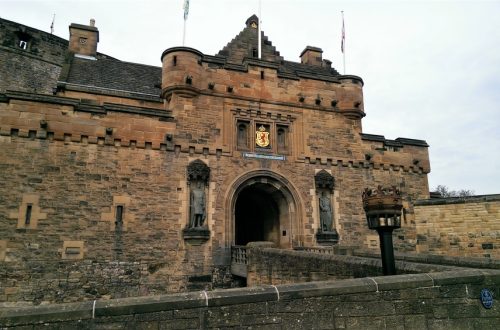Towards the end of March 2022, I set off on a little road trip around northern East Anglia. When I was looking in my guidebook for inspiration for places to visit, one place that jumped out at me was Ely.
I was aware Ely was a small cathedral city in Cambridgeshire but knew little else about it.
So you can imagine my surprise when I discovered this unassuming city in the heart of the Fens boasts a truly spectacular cathedral that’s up there with the best in the UK, if not in Europe.
I spied Ely’s cathedral, nicknamed the ‘Ship of the Fens’, long before I reached the city, as it’s visible for miles around thanks to the flat nature of the surrounding countryside.
After parking in one of the city’s many free car parks, I ambled the short distance through the winding streets to the palace green, where I had my first proper glimpse of the magnificent building .
There’s been a church of some description on the site since 673 when the Saxon queen St Ethelreda founded a monastery there, but the current cathedral dates back to the Norman period.
Work started on it in the 1080s and it took 268 years to build using limestone from nearby Northamptonshire. It’s said some 365 men were killed in the process.
Over the centuries, the cathedral’s undergone massive restoration work, most notably in the 1750s to 1770s, 1830s to 1870s and, more recently, between the 1980s and 2000.

I crossed the palace green in the direction of the cathedral, passing the old bishop’s palace, which is now a sixth form college (above).
I entered the church via the beautiful Gothic Galilee Porch and on going inside, I was taken aback by the cathedral’s grandeur.

The high-vaulted ceiling in the elegant nave is adorned with panels painted during the Victorian era by Henry le Strange and Thomas Gambier Parry (above).
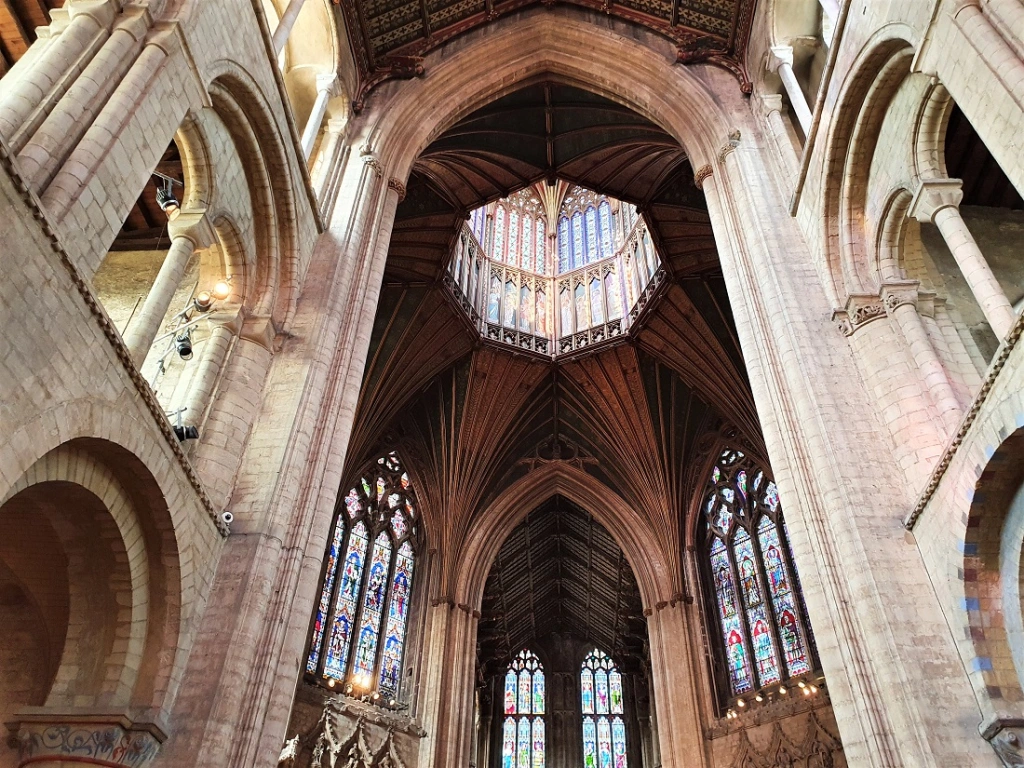
I wandered up the nave in awe, but it was only a taste of what was to come – I was left speechless when I laid eyes on the incredible octagon tower in the centre of the cathedral (above).
Words can’t do justice to how spectacular this medieval marvel is and it rivals Paris’s Sainte-Chapelle in its splendour.
Built between 1322 and 1340, the stone tower was designed to replace the cathedral’s original Norman tower, which collapsed in February 1322.
A unique feat of medieval engineering, what makes this tower so special is the lantern made from painted wood, lead and glass that tops the stone pillars.
It’s a sublime work of art and unlike anything I’ve ever seen.
After spending a long time gazing at the lantern, I finally tore myself away to look around the rest of the cathedral.
Starting in the south transept and St Dunstan’s Chapel, I then made my way to the choir.
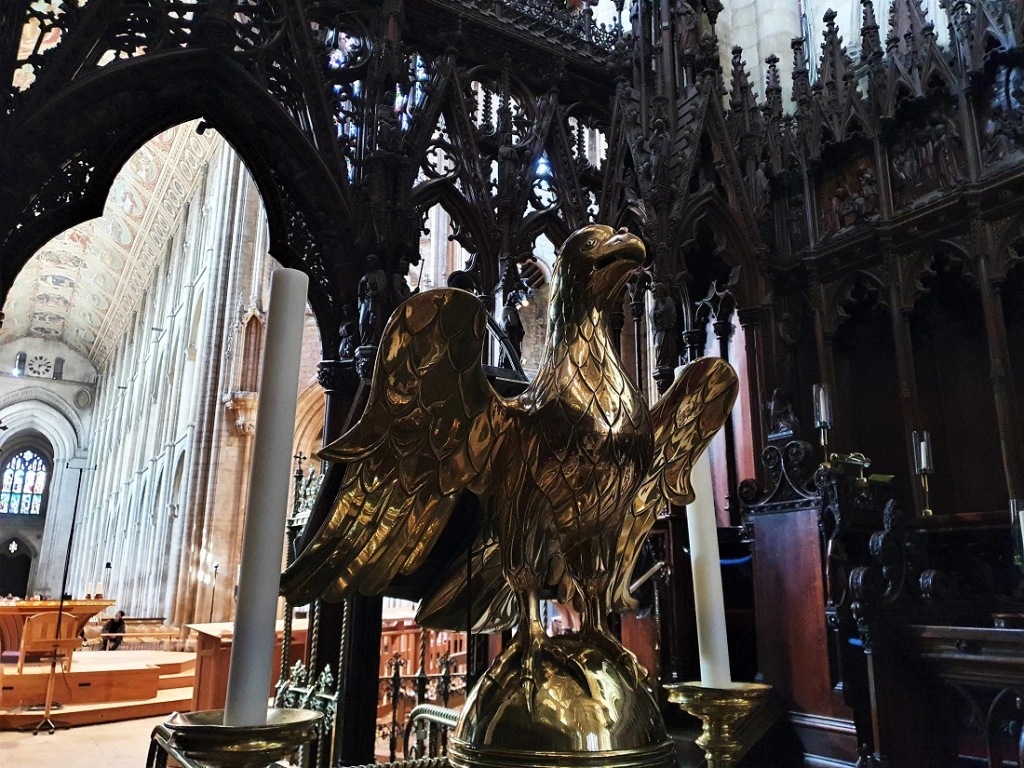
The 14th century choir is very pretty and as I walked around, I again found myself marvelling at the superb craftsmanship on display.
The carved Gothic wooden stalls are exquisite, but I was also rather taken by the gold eagle-topped lectern (above).
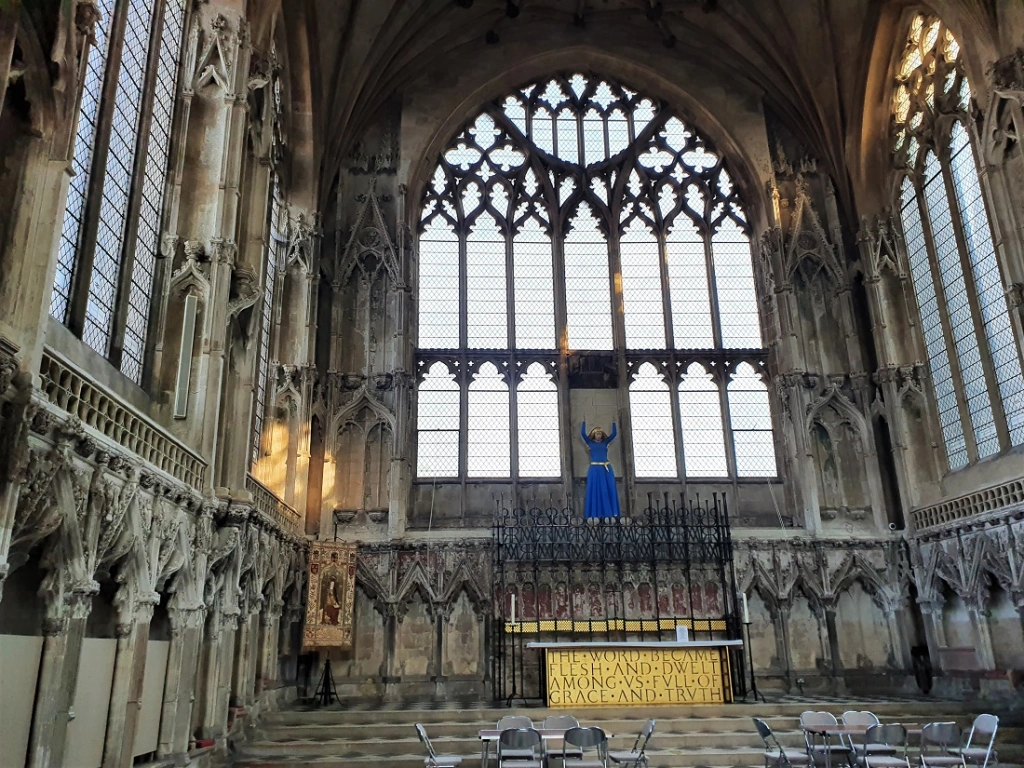
From the choir, I spent some time looking around the cathedral’s Lady Chapel (above). Built between 1321 and 1349, it’s the largest of its kind in England.
During the Middle Ages, the chapel was painted and adorned with stained glass windows and statues, but all that was destroyed during the Reformation leaving it rather bare now.
It’s such a shame, as I suspect the chapel, like the rest of the cathedral, would have been stunning in its heyday.
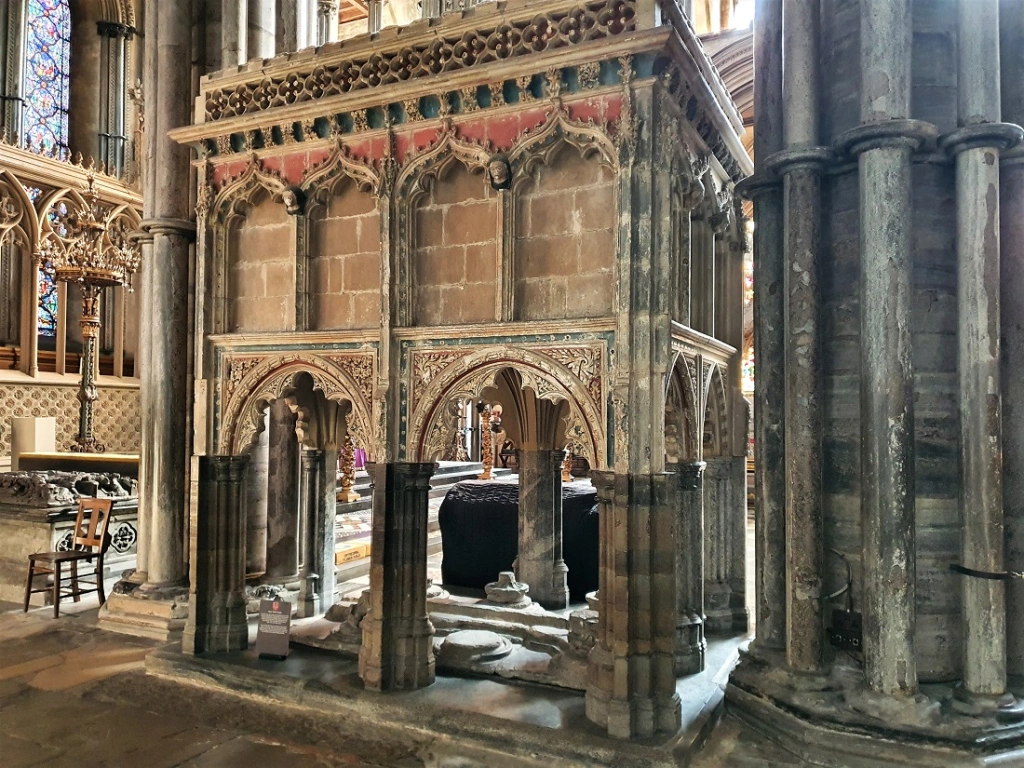
Heading in the direction of the presbytery, I stopped to take a look at the medieval stone tomb canopy (above).
It’s thought the impressive canopy may have once topped the tomb of John Hotham, who served as Bishop of Ely and Chancellor of the Exchequer in the early 1300s.
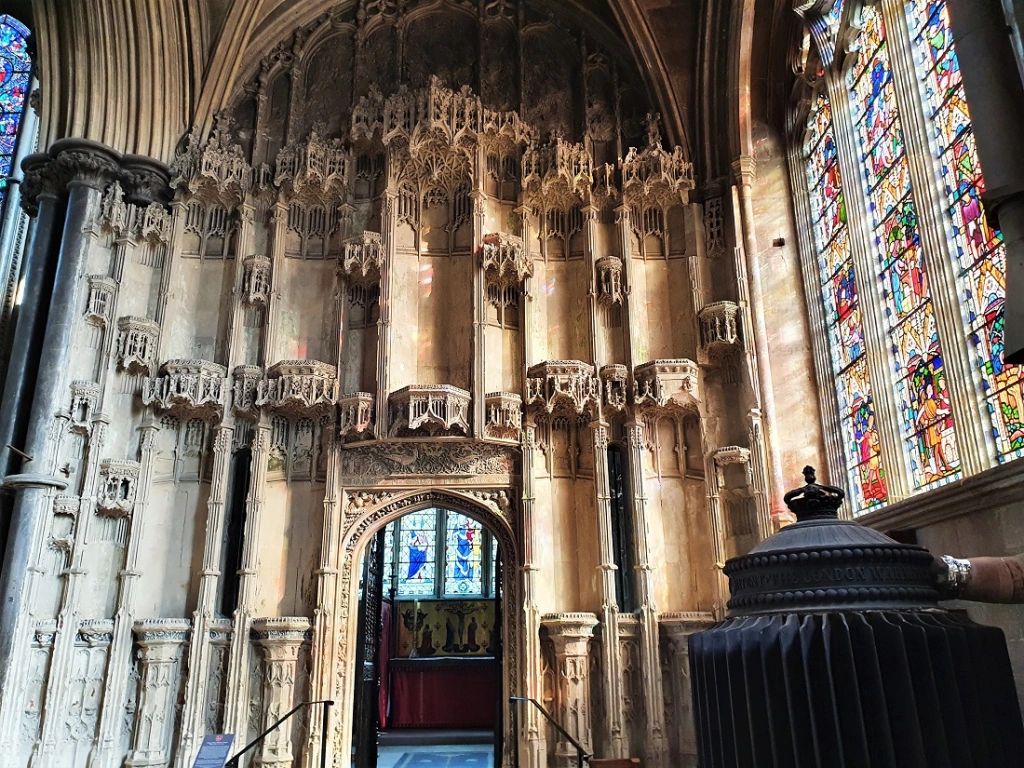
At the far end of the cathedral, I looked around a trio of chapels: Bishop Alcock’s Chantry Chapel, St Ethelreda’s Chapel and Bishop West’s Chantry Chapel (above).
Featuring architectural touches such as intricately detailed stone carvings and ceilings, the chapels are as delightful as the rest of the church.
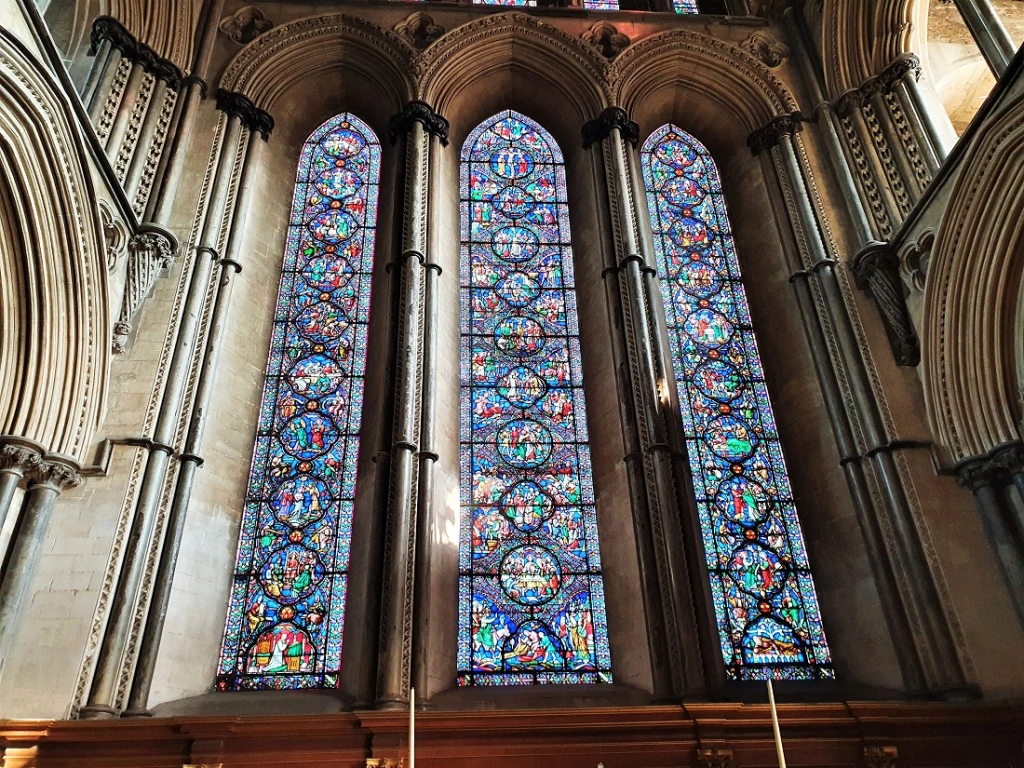
St Ethelreda’s Chapel is also home to the attractive East Window (above), which was added during the Victorian restoration and depicts Jesus’s life story.
Continuing through the cathedral, I made my way back towards the octagon tower to take a look at the north transept and its two chapels.
Of the two chapels, St George’s is especially poignant as it features the names of the local people who died during the two world wars.
Before leaving the cathedral, I stopped one last time to admire the incredible beauty of the octagon tower, and then made my way out into the spring sunshine via the south door.
Outside, I followed the path to the pretty garden behind the cathedral (below) and the Almonry Tea Room, where I enjoyed a lovely cream tea.
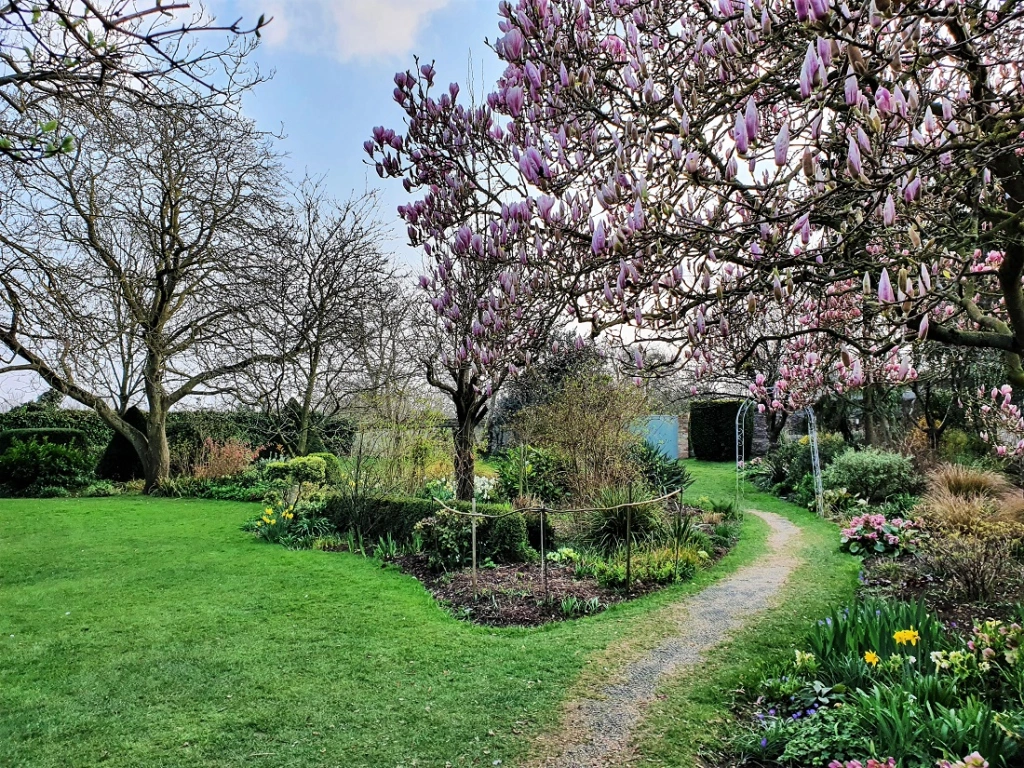
Late lunch over, I set off to explore Ely’s medieval centre, which is filled with small winding streets and shops, before retracing my steps back towards the cathedral and the palace green.
Before leaving Ely, I strolled towards the old timber-framed house where Oliver Cromwell once lived (below).

The puritanical Lord Protector of England lived in Ely for a while, where he worked as a tithe collector for the cathedral.
It was really late in the day by this point, and I didn’t have enough time to pop inside and have a look around, so instead I made my way back to my car.
If you hadn’t guessed by now, I absolutely adored Ely and its breathtaking cathedral.
England’s second smallest city (after Wells) is charming and its cathedral is one of the most spectacular I’ve seen. It far exceeded my expectations and is well worth a visit if you’re in the area.





